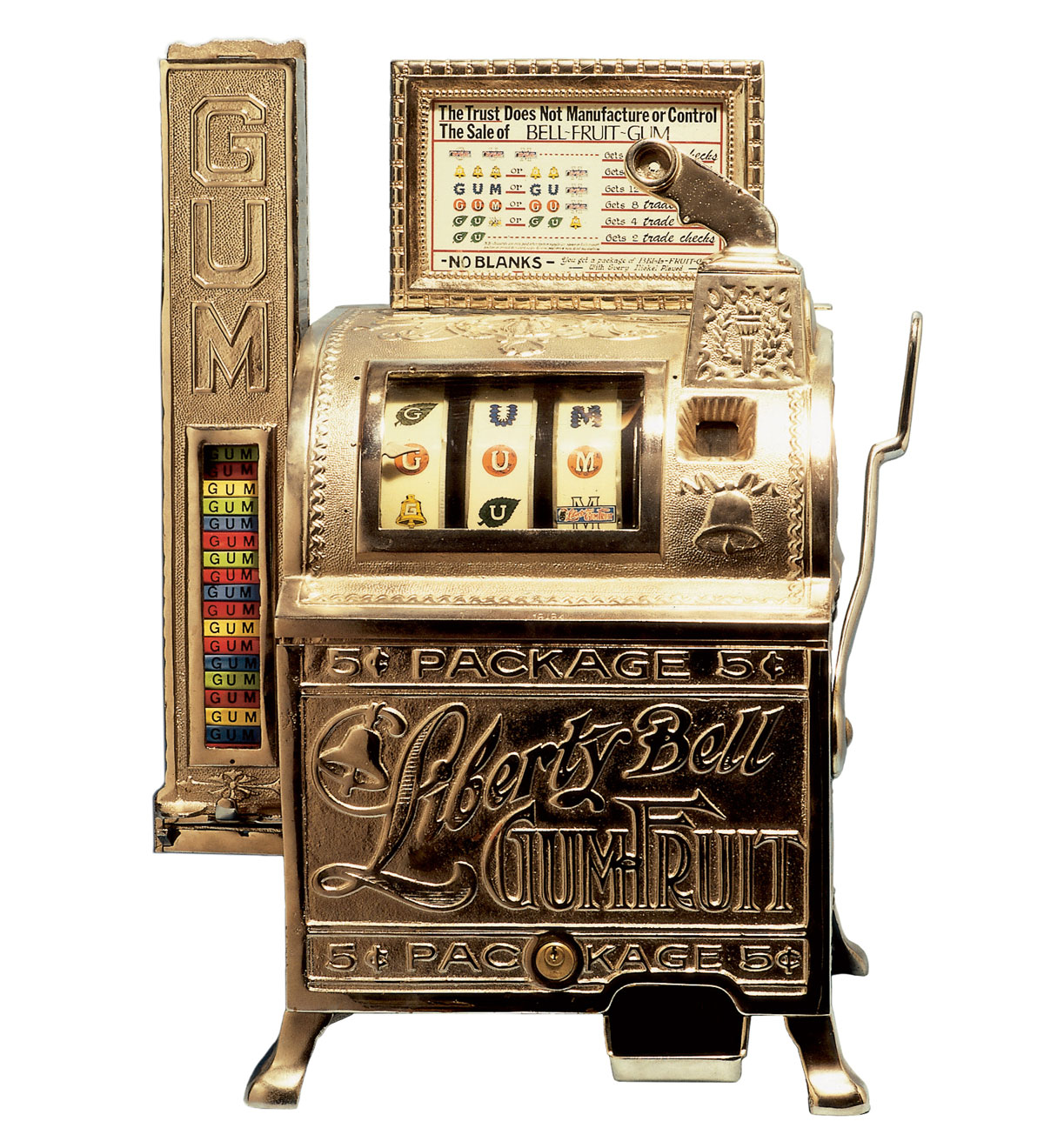Cherry, Cherry, Cherry
How the slot machine got its fruit
Marshall Fey
The history of the slot machine—the familiar three-reel version of which was invented by San Francisco auto mechanic Charles Fey in the late 1880s—is marked by the device’s constant struggle for survival, during which many ploys were used to circumvent the gambling laws of the day. Perhaps the most successful of these tactics was a simple transformation of the slot machine’s image, from gaming device to vending machine. This was accomplished in 1910, when Mills Novelty added a mechanism that gave the player the option of getting a piece of gum with every nickel played. The gum was of low quality and generally not taken, as the principle concern of the operator was the money paid out by the slot. To emphasize the idea that this was a vending machine rather than a gambling device, fruit symbols were substituted for Fey’s original poker symbols to suggest the fruit gum they dispensed—the derivation of the popular cherry, orange, plum, and lemon symbols used for many years. The “bar” was the gum wrapper label (there was no jackpot on a slot until 1928), and the bell symbol originated from Fey’s earlier three-reel “Liberty Bell” slots.

Marshall Fey is the grandson of Charles Fey, the inventor of the original Liberty Bell slot. His book, Slot Machines: America’s Favorite Gaming Device (Liberty Belle Books, 2002) may be ordered through any bookstore.
Spotted an error? Email us at corrections at cabinetmagazine dot org.
If you’ve enjoyed the free articles that we offer on our site, please consider subscribing to our nonprofit magazine. You get twelve online issues and unlimited access to all our archives.